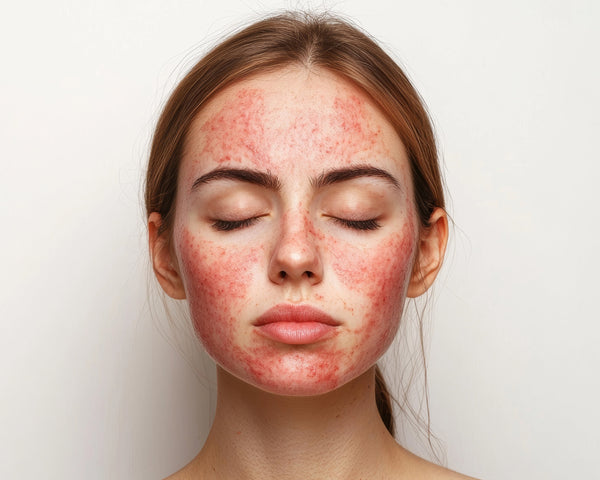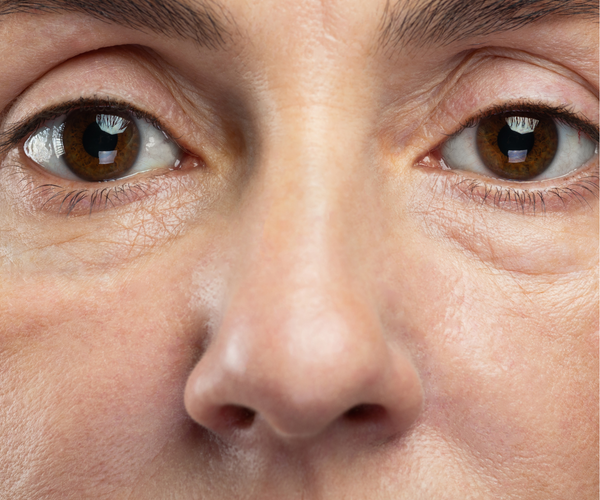What is Combination Skin and How to Care for It

What is Combination Skin?
Combination skin is a common skin type characterized by a mixture of oily and dry areas on the face. It's often oily in the T-zone (forehead, nose, and chin) and dry or normal on the cheeks. This duality presents unique challenges in skincare, as you need to address both dryness and oiliness simultaneously. Understanding your specific combination skin type is crucial for effective skincare.
Unlike purely oily or dry skin, combination skin requires a balanced approach. Over-treating the oily areas can dry out the already delicate dry areas, and vice-versa. Finding the right balance is key to achieving healthy, radiant skin.
Identifying Combination Skin
Identifying your skin type is the first step. Here's how to tell if you have combination skin:
- Oily T-zone: Your forehead, nose, and chin appear shiny, feel oily to the touch, and are prone to enlarged pores and breakouts.
- Dry cheeks: Your cheeks may feel tight, dry, flaky, or rough, especially in colder or drier weather.
- Mixed areas: You may have a mix of oily and dry areas in different sections of your face.
If this sounds familiar, you likely have combination skin. However, consult a dermatologist if you are unsure or experiencing persistent skin issues.
Caring for Combination Skin: A Step-by-Step Guide
Caring for combination skin requires a thoughtful approach. Here’s a comprehensive guide:
1. Cleansing
Gently cleanse your face twice daily with a mild, sulfate-free cleanser. Avoid harsh cleansers that can strip your skin of its natural oils, leading to increased dryness and oil production. Look for cleansers formulated for combination skin or those containing ingredients like ceramides or hyaluronic acid to hydrate and balance the skin.
2. Exfoliation
Exfoliation is crucial for removing dead skin cells and preventing clogged pores, especially in the oily T-zone. Aim for 1-2 times a week using a gentle chemical exfoliant containing alpha-hydroxy acids (AHAs) or beta-hydroxy acids (BHAs). Avoid harsh scrubs that can irritate your dry skin areas.
3. Toner
A toner can help balance your skin's pH after cleansing. Choose a toner that is alcohol-free to avoid further drying out your skin. Look for toners with hydrating ingredients like hyaluronic acid or aloe vera.
4. Moisturizing
Even oily areas need hydration! Use a lightweight, oil-free moisturizer on your oily T-zone and a richer moisturizer on your dry cheeks. This targeted approach addresses the varying needs of your combination skin.
5. Sunscreen
Sunscreen is crucial for everyone, but especially important for combination skin as it prevents sun damage that can worsen existing issues. Use a broad-spectrum sunscreen with at least SPF 30 daily, even on cloudy days.
6. Targeted Treatments
Address specific concerns with targeted treatments. For breakouts in the T-zone, spot treat with benzoyl peroxide or salicylic acid. For dry patches, apply a hydrating serum or face oil.
7. Diet and Lifestyle
A healthy diet and lifestyle contribute to overall skin health. Drink plenty of water, eat a balanced diet rich in fruits and vegetables, get enough sleep, and manage stress levels to maintain a healthy complexion.
Choosing the Right Products
When choosing skincare products, consider the following:
- Ingredients: Look for products that are non-comedogenic (won't clog pores), oil-free, and contain hydrating ingredients like hyaluronic acid and ceramides.
- Formulation: Opt for lightweight lotions and gels for the T-zone and richer creams for the dry areas.
- Skin Sensitivity: Choose products formulated for sensitive skin to minimize the risk of irritation.
When to See a Dermatologist
If you are experiencing persistent skin issues like acne, excessive dryness, or redness despite following a consistent skincare routine, consult a dermatologist. They can diagnose your specific skin type and recommend a tailored treatment plan.
Conclusion
Caring for combination skin requires a balanced and personalized approach. By understanding your skin's unique needs and employing the right skincare routine, you can achieve a healthy, radiant complexion. Remember consistency is key; be patient and persistent in your efforts, and you'll see improvement over time.




